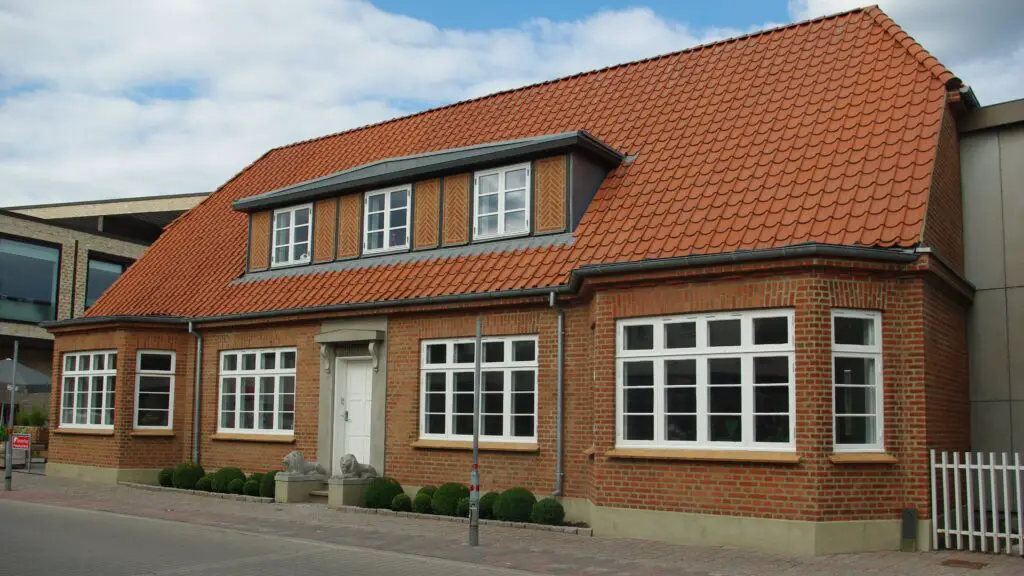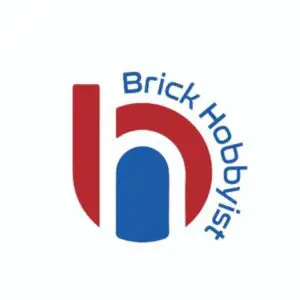
The LEGO Group was founded on August 10, 1932, in Billund, Denmark by Ole Kirk Kristiansen. The company was handed down from father to son and is currently owned by the grandchild of the founder, Kjeld Kirk Kristiansen.
LEGO, to date, stands as one of the most popular and profitable lines of constructive toys. However, the company has its fair share of ups and downs, with huge challenges coming forth at various points in its journey of growth and expansion.
A breakdown of its history shows us how despite so many obstacles to face, LEGO continued to believe in its idea and remains our most-favorite toy manufacturer. Let’s go through how the company was created and achieved such an unsurpassable position.
Table of Contents
Beginning Of The LEGO Journey (1890-1929)
It all started when Ole Kirk Kristiansen bought Billund Maskinsnedkeri (Billund woodworking and carpentry shop). The shop then produced a bunch of items, including doors, kitchen cabinets, cupboards (you name it), etc.
Besides, Ole Kirk also built other big-scale projects- houses, farm buildings- it all went smoothly until one day, his two sons, Karl Georg and Godtfred, accidentally set fire to some wood shavings. Unfortunately, the home and workshop were burned to ashes. This incident would later turn out to be a leading reason that pushed forward the idea for LEGO.
Shift Towards A New Reality
Another calamity struck- the time around 1929, an economic crisis took a serious toll on Ole Kirk Kristiansen. He could no longer carry out the carpentry work, and towards 1931, he had no choice but to bid farewell to his last journeyman too.
He was forced to work on smaller, readily marketable products, such as stepladders, ironing boards, other utility items and toys (something that would completely change his future).
In the 1930s, Ole Kirk focused only on toy production; obviously, there weren’t many supporters of this idea. Thanks to his belief in himself, he had successfully laid the foundation of what would become one of the world’s top leading toy-making companies within a few years.
LEG GOdt; The Emergence Of LEGO Name
When Ole Kirk Kristiansen devoted all his concentration to toy production, he realized the company must be named something other than “Billund Maskinsnedkeri”.
It didn’t take much time for Ole to develop a unique name, ‘LEGO’- the word itself was derived from two Danish words, LEG GODT, which means play well.
And for the first time in January 1936, the LEGO name was officially used. (Fun fact; the word also means ‘I assemble’ in Latin).
The Start Of LEGO Group (1930-1939)
As an outcome of the global economic crisis, carpenter Ole Kirk was bounded to produce new, easily saleable items. The LEGO group initially formulated wooden toys, such as airplanes, cars and yoyos.
Besides this, Ole Kirk also produced everyday use articles side by side.
During these tough times, Ole reached out to his family for help, but his ideas were questioned and scrutinized, to his astonishment.
Despite all the challenges, Ole continued to follow his idea and fully concentrated on his toy business. Once the official name started to get used in January 1936, he knew his goal: to produce premium quality toys for children.
The wooden duck was one of the first popular wooden toys produced during this time. This toy was made of one piece and consisted of a duck sitting on four wheels and when you pulled it along with the attached string, the mouth would open and close.
The wooden duck was produced until 1960 when the LEGO Group stopped making wooden toys. This toy was the most popular and iconic wooden toy the LEGO Group ever produced.
High-Quality Toy Production
For Ole, quality couldn’t be compromised at any cost; he was clear in his mind that children deserved toys made from the finest materials so they could last for many years. To achieve this, he used beech wood, which was first air-dried for two years and then kiln-dried for three weeks. Then, it was cut, sanded, polished, plus given a varnish or paint coat.
At every stage of toy production, Ole Kirk demanded quality which became a leading reason behind the immense success of the LEGO Company.
Buying Of The First Milling Machine
For further improvement in the quality, Ole Kirk Kristiansen wanted to introduce all sorts of new technology, machinery and processing methods. It led him to buy his first milling machine in the mid-1930s in Germany. It was a huge investment on his part and taking a huge risk.
However, Ole had no doubts about his investment as he was sure the machine would dramatically increase the quality of wooden toys.
The Outbreak Of World War Two
Even during the devastating war times, it didn’t limit Ole and his toy production- in fact, in the first two years of the war, the company had doubled its sales. Due to the war, import activities were banned, greatly favoring the sales of Danish goods and ultimately boosting LEGO production.
The Transitional Times For LEGO (1940-1949)
An unfortunate fire in 1942 destroyed all the hard work of Ole Kirk, turning everything into mere rubbles and debris. This time he was almost on the verge of dropping the idea of carrying on the business as insurance couldn’t cover the loss.
Although he received many offers from throughout Denmark, Ole decided to remain in Billund and luckily enough, he was also granted a loan to construct a new factory from scratch. The new factory became fully functional in 1943 and proved much more modern and better suited for mass toy production.
From Wooden To Plastic Toys
By the end of world war two, it became increasingly difficult to manage beechwood-based toys. Therefore, Ole Kirk shifted towards new trends and invested in a costly plastic injection molding machine.
Around 1949, the first primitive plastic bricks were introduced in the market under the name ‘automatic binding bricks’ – what we now know as LEGO brick.
Also, it was time to look beyond the Danish market, so the LEGO group decided to spread its plastic toy production to Norway, which worked greatly in their favor.
In 1951, the LEGO Group manufactured a small-scale Ferguson Tractor made of plastic. The tractor was very popular; in 1952, the sales of plastic products passed that of wooden products. From the tractor’s launch in 1951 until 1954, 100,000 units are sold.
The Ferguson toy tractor represented the beginning of how the LEGO Group would proceed and ultimately lead to the development of the plastic LEGO brick we see today.
Wide Scale Manufacturing And Demand Of LEGO (1950- 1999)
From day one, the LEGO group had aimed at quality in every detail. They had been manufacturing product molds in Billund since 1953. However, with increasing sales, the company had to open LEGO form in Vejle, providing the necessary extra precision-made molds.
Besides, the company also focused on material improvement, and for added efficiency, a quality control department was established in 1963.
Up through the 1950s and 1960s, the company actively invested in several machines to match the rising production. It led to the emergence of the hot runner mold, the introduction of vacuum forming and thermoforming, and the focus on decoration with the Tampo print machine bought in the early 1970s.
As time passed, further developments took place, especially the introduction of a toy system. It is how during 1970, the LEGOLAND line came to the forefront. The system kept expanding as the company developed LEGO DUPLO, targeted at preschool children and LEGO technic aimed at older children.
The Expansion Of The LEGO Toy Range
In 1974, LEGO building figures were the show stealers, and simultaneously the LEGOLAND range was also under continuous changes as newer and newer toys were added to the set.
Another milestone was achieved in 1978 when LEGO play themes were introduced for the first time- the earliest being the iconic LEGO space sets and castle sets that gained immense popularity.
Similarly, in 1979, the company hit the market with FABULAND, easy-to-build models appropriate for children aged 3-7 and appealing to both genders.
Setting Up A Factory In The Czech Republic
One major event for the LEGO group was when it announced its intention to build a new factory in the Czech Republic in 1999. This step would help the quick supply of products in Western Europe and the rapidly growing market in Eastern Europe.
The new factory was fully functional in 2000, with the LEGO system production beginning in 2001 with molding, processing and packing.
Heavy Expansion Period Of LEGO Group (the 2000s And Onwards)
As a result of the rising demand worldwide, five LEGO molding sites were dedicated to meet the increased market requirements. These are in Billund, Denmark, Monterrey, Mexico, Nyiregyhaza, Hungary, and Jiaxing China. The Kladno site is crucial in providing LEGO bricks to children worldwide. Check out a more in-depth article I wrote about the LEGO Group’s factories.
From the beginning to the mid-2000s, the LEGO group wanted to bond closer with its consumers and thus created new ways of communication and engagement. It would set forth the idea of community-based innovation initiatives. One fine example of it is LEGO ideas, launched in 2014. Check out an article I wrote where I go into great detail about LEGO Ideas.
Furthermore, the company returned to Asia, announcing its decision to build a factory in China in 2013, incorporating molding, decoration and packing facilities. Finally, in December 2015, real LEGO elements started to be molded in Jiaxing, China, and it would supply LEGO sets only to the Asian market. For more information on the LEGO factory in China, take a look at this article I wrote.
And even today, LEGO actively works to bring innovative yet enjoyable concepts into the constructive toys industry.
What Was The First LEGO Ever Made?
The first LEGO plastic brick was made in 1949. The first ever LEGO set was made in 1949 under the name of “Automatic Binding Bricks.” The first set made under the name “LEGO’, was set #1200 LEGO Town Plan Board.
What Was LEGO Originally Called?
LEGO was originally called Automatic Binding Bricks but was renamed LEGO in 1953. In 1955 the LEGO System in Play was introduced, and LEGO is developed into a toy system. This meant that moving forward, all LEGO elements would fit together no matter where they were produced.
The LEGO System in Play was a milestone for the company and one of the main reasons for the product’s success.
What Color Was The first LEGO Brick?
The color of the first brick is white, as seen by the fact that the color id is “1”. Originally there were just 7 main colors until the early 1980s when there were 16 colors and the 1990s saw the same number of colors we have today.
Final Thoughts
To sum up, the LEGO group has come a long way since its humble beginnings in 1932. It has grown into a multi-billion-dollar company that is now one of the most recognizable brands in the world. The company has achieved this success by prioritizing quality, innovation and customer engagement.
Even today, LEGO continues to grow and evolve, with new initiatives such as LEGO Ideas that crowdsource product ideas from the LEGO community. As the company looks to the future, there is no doubt that it will continue to be a leader in the constructive toys industry.
LEGO remains a toy industry leader, thanks to its dedication to creativity and customer engagement.
